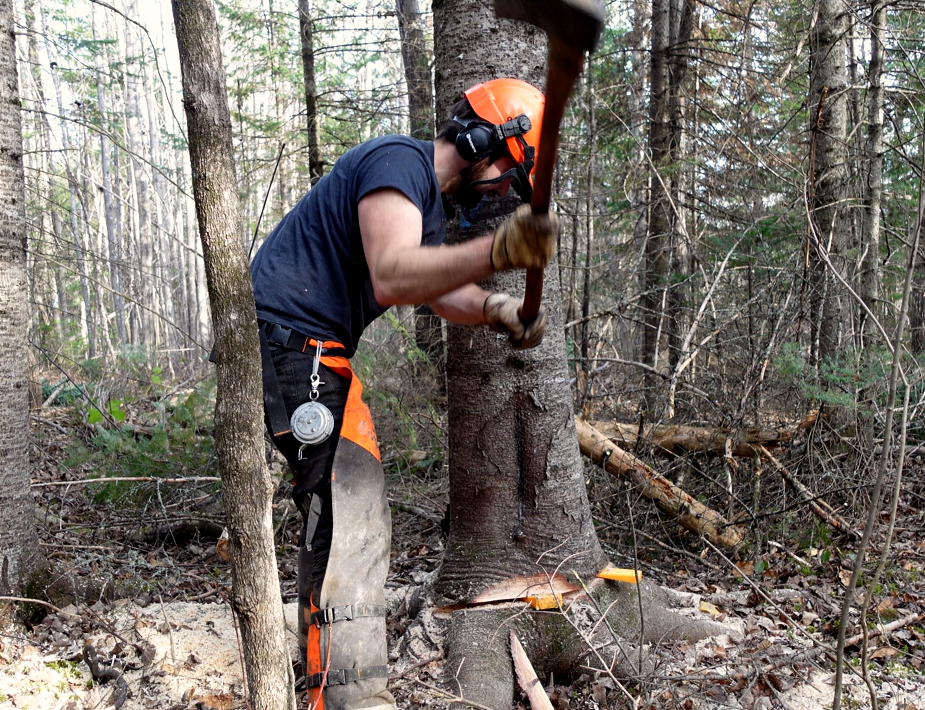Timber Triumph: Essential Tree Felling Maintenance for a Greener Tomorrow
In the heart of our forests and urban landscapes, trees play a vital role in maintaining ecological balance and enhancing aesthetic beauty. However, there are times when tree felling becomes a necessary practice for the health of the environment and the safety of our communities. This essential service not only addresses issues like disease or hazards posed by dying trees but also lays the foundation for better growth and development in surrounding areas.
Proper tree felling maintenance is key to ensuring that the process is executed safely and responsibly. It involves careful planning, skilled labor, and an understanding of the ecosystem’s needs. By spez-ag.ch , we can promote a greener tomorrow where our interactions with nature are sustainable and harmonious. Embracing tree felling as part of our landscape management not only helps us mitigate risks but also paves the way for new growth and revitalization in our natural spaces.
Understanding Tree Felling Techniques
Tree felling involves various techniques that ensure both safety and efficiency during the process. Among the most common methods is the open-face notch technique, which is utilized for its effectiveness in controlling the direction of the fall. This method involves making a notch on the side of the tree facing the desired direction of fall, followed by a back cut on the opposite side. Properly executed, this technique allows for a more precise and safer felling process.
Another essential method is the Humboldt notch technique, which is preferred in certain conditions, especially when dealing with trees that have high lean or are in proximity to structures. This technique features a unique cut that helps release tension in the tree and allows it to fall in the intended direction. Understanding when and how to use different techniques is crucial for anyone involved in tree felling maintenance.
Additionally, the use of tools such as chainsaws, axes, and wedges significantly impacts the efficiency of tree felling. The choice of tool often depends on the size and type of tree being cut down. Mastering these techniques and tools not only enhances safety but also contributes to the overall maintenance of the environment by enabling controlled and responsible tree felling practices that promote a greener tomorrow.
Safety Measures for Tree Felling

When embarking on tree felling, it's crucial to prioritize safety to protect both workers and the surrounding environment. Before beginning the process, a thorough assessment of the tree and its surroundings should be conducted. This includes identifying potential hazards, such as power lines, nearby structures, and the direction in which the tree is likely to fall. Wearing appropriate personal protective equipment, such as helmets, gloves, eye protection, and sturdy footwear, is essential to minimize the risk of injury during the job.
Communication among team members is vital during tree felling operations. Everyone involved should be aware of the plan and the signals used to indicate when the tree is about to fall. Establishing a safe zone at a considerable distance from the base of the tree ensures that all personnel are clear of danger. Additionally, using proper cutting techniques and maintaining control over the chainsaw or axe is important to prevent accidents. Regular training and drills can further enhance preparedness and reinforce safety protocols.
After the tree has been felled, the area should be inspected for any unexpected hazards, such as hanging branches or unstable ground. Properly removing debris and ensuring that all tools and equipment are secured can help maintain a safe working environment. By adhering to strict safety measures, tree felling can be conducted efficiently while fostering a commitment to responsible practices for a greener tomorrow.
Sustainable Practices for Tree Removal
Sustainable tree removal practices are essential in maintaining ecological balance while effectively managing tree health and safety. One key aspect is the assessment of the tree's overall condition before any removal takes place. Certified arborists evaluate the health, stability, and surrounding environment of the tree to determine if removal is necessary or if alternative solutions, such as pruning or disease management, can suffice. This careful evaluation helps minimize unnecessary tree loss, promoting a healthier ecosystem.
Another sustainable practice involves responsible disposal and utilization of the removed tree materials. Instead of simply chipping or burning the wood waste, many tree felling services now focus on repurposing the timber. This can include turning logs into mulch, wood chips, or even furniture, minimizing waste and reducing the need for new materials. Such practices not only benefit the environment by recycling resources but also support local economies by providing materials for various industries.
Lastly, planting new trees in replacement areas post-removal is crucial for restoring the environment. Many tree maintenance services advocate for reforestation or afforestation initiatives to offset the impact of tree felling. By working with local communities and environmental organizations, they can ensure that new trees are planted strategically, promoting biodiversity and enhancing habitat for wildlife. This proactive approach lays the foundation for a greener tomorrow, helping to create sustainable landscapes that can thrive for generations to come.